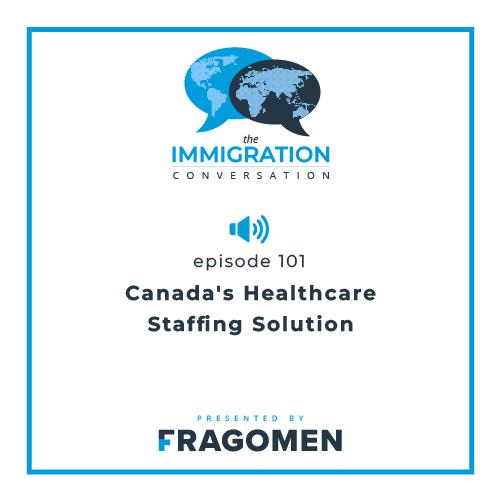
Country / Territory
Related contacts
Related offices
Related contacts
Related offices
Related contacts
Related offices
By: Isha Atassi
Being in the United States on a visa with older children can sometimes feel like a race against the clock to ensure they do not “age out” before securing a pathway to remain in the country long-term. Once a child turns 21, they are no longer considered a dependent under U.S. immigration law and cannot remain in the U.S. on a dependent visa, such as an H-4, L-2, TD, F-2, or similar.
But what if you have a special needs child who will always be functionally dependent on you irrespective of their age? As the mother of a special needs, fully dependent teenager and an immigration attorney, Partner Isha Atassi empathizes with foreign nationals who are faced with this issue. She understands how difficult it can be to navigate the complexity of special needs children transitioning to “adulthood” while also worrying about their ability to remain in the U.S.
For fellow parents of special needs children who are in the U.S. on a visa, planning ahead is recommended, and you are encouraged to take proactive steps to ensure your and your family’s permanent residency if you wish to remain in the country.
To get started, consider these three tips:
- If you are on a work visa, speak to your employer and explain your special considerations. While employers may have green card guidelines that specify when they will consider you for sponsorship, they may make an exception given your unique situation.
- Take your green card timeline into your own hands. There are several options available for self-sponsorship that do not require your employer’s involvement. For example, depending on your credentials, you may be eligible to apply for a National Interest Waiver (NIW) or Extraordinary Ability (EB-1) green card – both of which do not require employer sponsorship. Fragomen offers assessments to determine if cases are viable, how they can be strengthened or how to consider alternative options.
- Factor in the timeline to receive your green card and your child’s current age. For many foreign nationals born in India or China, for example, even if you start your green card process early, your child may be at risk of “aging out” due to backlogs in the more traditional EB-2 and EB-3 green card categories. You may need to explore alternative categories with significantly faster timelines, such as the EB-5 investor program. Choosing the right EB-5 project to invest in is the key to ensuring an accelerated processing time, irrespective of your country of birth. Industry professionals will be able to guide you through the best options for you and your family.
Need to know more?
It is critical to start the green card process early and be strategic about your options to ensure your child is in the best position possible to achieve success. For more information, please contact Partner Isha Atassi at [email protected].
This blog was published on February 23, 2024, and due to the circumstances, there are frequent changes. To keep up to date with all the latest updates on global immigration, please subscribe to our alerts and follow us on LinkedIn, X, Facebook and Instagram.
Country / Territory
Related contacts
Related offices
Related contacts
Related offices
Related contacts
Related offices
Explore more at Fragomen

Video
In this Mobility Minute, Associate Rebeca Lafond outlines key considerations for international travel to the United States during the holiday season, including documentation requirements, visa processing expectations and enhanced screening on entry.

Media mentions
Partner K. Edward Raleigh explains that the Department of Labor’s Project Firewall expands H-1B oversight beyond individual complaints and increases the scope of employer compliance reviews.

Media mentions
UK Government Affairs Strategy Director Shuyeb Muquit examines how proposed settlement reforms could reshape the path to UK residency by extending qualifying periods and linking eligibility to individual contribution.

Podcast
Partner Cosmina Morariu and Business Immigration Manager Ayana Ibrahimi discuss critical immigration strategies underpinning healthcare-sector staffing in Canada, unpacking how recent policy, mobility and compliance developments are affecting employers and global talent pipelines.

Awards
Fragomen named Private Client Team of the Year at The British Legal Awards 2025, recognising the strength of our UK Private Client practice.

Media mentions
Partner Daniel Brown highlights rising deceptive practices in immigration and emphasizes stronger verification and compliance measures for employers.

Media mentions
Senior Manager Louise Senior highlights how proposed UK reforms could expand right to work checks across hospitality and reshape compliance for businesses.

Video
Rick Lamanna, Jake Paul Minster and Lunga Mani discuss Africa’s path to the 2026 World Cup.

Media mentions
Partner Louise Haycock notes that the UK’s new fast-track residency route for high earners could affect how businesses plan for immigration costs.

Blog post
Senior Manager Zaur Gasimov outlines Georgia’s stricter residence-permit requirements and enhanced monitoring measures introduced under the country’s 2025 immigration reforms.

Media mentions
Senior Manager Jonathan Hill explains why more UK universities are on UKVI student visa action plans and how extended timeframes help them address compliance issues.

Media mentions
Partner Karolina Schiffter explains why Poland has paused online residence permit bookings and returned to paper-based submissions.

Video
In this Mobility Minute, Associate Rebeca Lafond outlines key considerations for international travel to the United States during the holiday season, including documentation requirements, visa processing expectations and enhanced screening on entry.

Media mentions
Partner K. Edward Raleigh explains that the Department of Labor’s Project Firewall expands H-1B oversight beyond individual complaints and increases the scope of employer compliance reviews.

Media mentions
UK Government Affairs Strategy Director Shuyeb Muquit examines how proposed settlement reforms could reshape the path to UK residency by extending qualifying periods and linking eligibility to individual contribution.

Podcast
Partner Cosmina Morariu and Business Immigration Manager Ayana Ibrahimi discuss critical immigration strategies underpinning healthcare-sector staffing in Canada, unpacking how recent policy, mobility and compliance developments are affecting employers and global talent pipelines.

Awards
Fragomen named Private Client Team of the Year at The British Legal Awards 2025, recognising the strength of our UK Private Client practice.

Media mentions
Partner Daniel Brown highlights rising deceptive practices in immigration and emphasizes stronger verification and compliance measures for employers.

Media mentions
Senior Manager Louise Senior highlights how proposed UK reforms could expand right to work checks across hospitality and reshape compliance for businesses.

Video
Rick Lamanna, Jake Paul Minster and Lunga Mani discuss Africa’s path to the 2026 World Cup.

Media mentions
Partner Louise Haycock notes that the UK’s new fast-track residency route for high earners could affect how businesses plan for immigration costs.

Blog post
Senior Manager Zaur Gasimov outlines Georgia’s stricter residence-permit requirements and enhanced monitoring measures introduced under the country’s 2025 immigration reforms.

Media mentions
Senior Manager Jonathan Hill explains why more UK universities are on UKVI student visa action plans and how extended timeframes help them address compliance issues.

Media mentions
Partner Karolina Schiffter explains why Poland has paused online residence permit bookings and returned to paper-based submissions.


